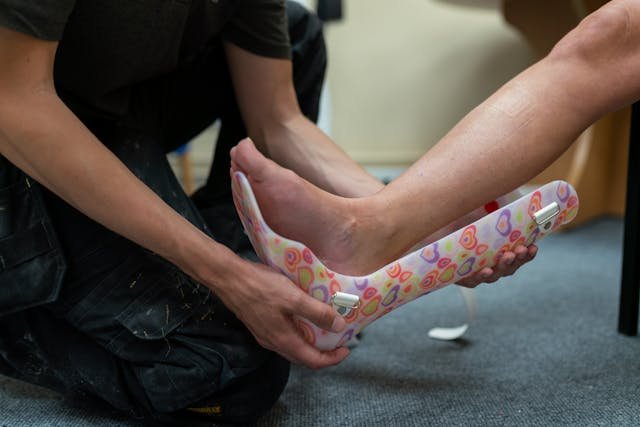A brachial plexus injury can change how your arm and hand work. Everyday tasks like dressing, writing, or holding a cup can become hard. But with the right prosthesis and the right approach, you can get back to doing these things again. It takes time, patience, and practice — but it’s possible. At Robobionics, we believe that recovery is not just about movement; it’s about helping people live their life with comfort, ease, and dignity.
In this article, we’ll explore how you can improve daily function after a brachial plexus injury using a prosthetic device. From setting up a routine to mastering specific tasks, each part of the journey matters. Whether you’re new to using a prosthesis or still deciding, this guide will help you understand what to expect and how to make steady progress.
Getting Comfortable with Your Prosthesis
Wearing a prosthesis is a big change. At first, it may feel strange or even a little overwhelming. That’s completely normal. The first step in using your prosthesis to improve your daily function is getting comfortable with it. This includes learning how it fits, how it feels, and how your body responds to it throughout the day.
The fit is very important. If your prosthesis feels too tight, too loose, or causes pain, it can affect how well you use it. A good fit should feel secure but gentle. It should support your movements, not block them. Spend time with your prosthetist to make sure your device fits well. Adjustments may be needed more than once, especially in the beginning as your body gets used to it.
Robobionics creates prosthetics that are custom-designed for your body. We use lightweight, breathable materials that feel natural against the skin. Our goal is to make the device feel like a part of you, not just something you wear. Once you feel at ease with your prosthesis, you’ll find it easier to take on daily tasks with confidence. Book a free fitting session today and experience the Robobionics difference.
Building Trust in the Device
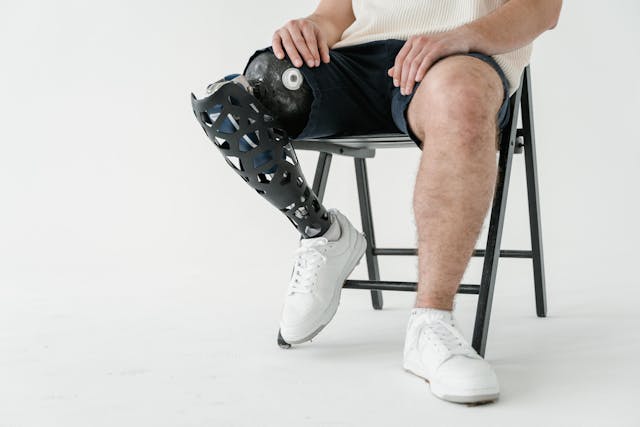
One of the biggest hurdles is learning to trust your prosthesis. It’s common to feel unsure at first — you may worry about dropping things, not reacting fast enough, or even causing injury. These feelings are valid, but they go away with time and experience. Trust grows with each successful action, no matter how small.
Start by using your prosthesis in simple, safe situations. Try picking up a pillow or holding a soft object. As you gain confidence, move on to tasks like brushing your teeth or using a spoon. The more you practice, the more you learn how your device moves, how it grips, and how it responds to your control. You’ll begin to rely on it without even thinking.
At Robobionics, we design our prosthetic arms with smooth control and quick feedback, so you can feel more in charge from the start. Our Grippy™ bionic hand adjusts to your grip strength and gives you better accuracy. With the right device and the right mindset, you’ll soon see your prosthesis not as a tool — but as a natural part of your life.
Creating a Daily Routine
Using a prosthesis becomes easier when it’s part of your daily routine. Just like brushing your teeth or getting dressed, using your prosthetic arm should feel like something you do every day — not something extra. Having a regular schedule helps your body and mind get used to it faster.
Start your morning by putting on your prosthesis as early as possible. Use it during meals, chores, or while reading and writing. The goal is to use it even for small tasks. Over time, your muscles and nerves will respond better, and your movements will become more natural. If you skip using it, the learning slows down and progress takes longer.
Robobionics encourages new users to stick to a simple, steady routine. We also offer training and rehab programs that can be done at home. These include gamified tools that make practice fun and track your progress. Ask us about our home-based rehab support to stay on track with your recovery, right from where you live.
Mastering Everyday Movements
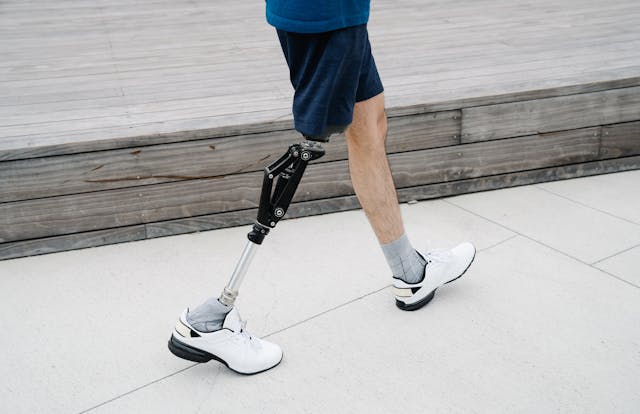
Once you’re comfortable wearing your prosthesis, the next step is learning how to use it in everyday movements. These are the things we all do without thinking — eating, grooming, using a phone — and getting better at them means gaining back your independence.
Handling Common Objects
Learning to hold, lift, and carry different objects is a key part of daily function. Each object feels different in weight, shape, and texture. Your prosthesis needs to respond to those differences, and you need to learn how to adjust your grip for each one. This doesn’t happen overnight, but with practice, it becomes easier.
Start with soft or light objects like paper, a remote control, or a soft towel. These are safe and allow you to test your grip without worry. Move on to heavier things as you gain control. If your prosthesis has a multi-grip feature, like Grippy™, you can switch between grips to match the task — from holding a spoon to picking up a cup.
At Robobionics, we provide training sessions focused on real-life objects you use every day. We help you understand how your prosthesis responds to pressure and positioning. With this guidance, you can feel more confident using your device in any environment, whether at home, at work, or outdoors.
Improving Hand and Arm Coordination
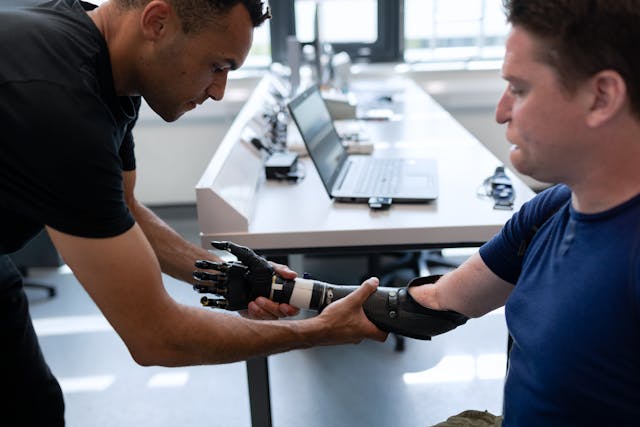
Coordination between your shoulder, elbow, and hand plays a big role in using a prosthetic arm effectively. Many people with brachial plexus injuries have weakness or loss of control in parts of the arm, not just the hand. This makes coordination more difficult — but not impossible. With targeted exercises, you can rebuild smoother, more accurate movements.
One good way to improve coordination is by doing two-hand activities, like folding laundry or setting a table. These tasks encourage both sides of the body to work together. You’ll start to see how your prosthetic arm can support your natural hand, making the whole task easier and faster. Even if your device does most of the holding or stabilizing, that alone can improve your efficiency.
Robobionics designs prosthetics that support the entire arm movement — not just the hand. Our team also works with therapists to develop coordination plans that fit your body’s current abilities. Book a session with our rehab partners and see how your range of motion can improve with focused training and the right support.
Using Both Hands Together
A big part of daily function is using both hands together — what we call “bimanual” use. This means your prosthetic hand and natural hand work as a team. Many users start by relying only on their natural hand, but over time, you can train your prosthesis to support more of the work. This not only makes tasks easier but also improves balance and posture.
You can begin by doing simple tasks like holding a bowl with one hand and stirring with the other. Even if your prosthesis is only helping to steady something, it’s doing an important job. As your confidence grows, try using your prosthetic hand to assist with buttoning shirts, opening jars, or carrying bags. These shared tasks build strong habits that carry over into all areas of life.
At Robobionics, we train users on how to work with both hands in a smooth, natural way. Our prosthetics are designed for functional grip, which makes them ideal for two-hand coordination. Come see a live demo and discover how your prosthetic hand can be more helpful than you ever imagined.
Overcoming Emotional and Physical Barriers
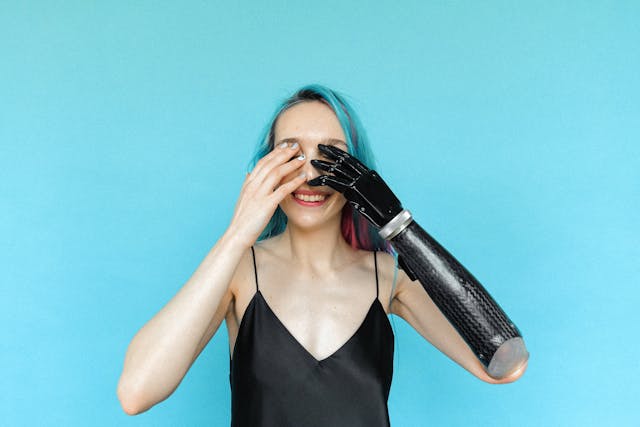
Recovery is not just physical — it’s emotional too. Using a prosthesis after a brachial plexus injury can come with many feelings, including fear, frustration, or even sadness. These feelings are natural and should be addressed as part of the healing journey.
Building Confidence Over Time
Confidence grows slowly, and that’s okay. It’s common to doubt yourself or feel unsure about using your prosthesis in public or around others. You might wonder how people will react or whether you’ll be able to do things the way you used to. These thoughts can slow down your progress, but they don’t have to stop you.
The best way to build confidence is through small wins. Celebrate every success — even if it’s just picking up your phone or pouring a glass of water. These small actions matter because they show you what’s possible. Each time you complete a task with your prosthesis, you take one step closer to full independence.
At Robobionics, we offer a strong user community where you can talk to others going through the same journey. Sharing stories, asking questions, and learning from each other can make a big difference. Join our support network and connect with people who understand what you’re experiencing — because they’ve lived it too.
Managing Pain and Discomfort
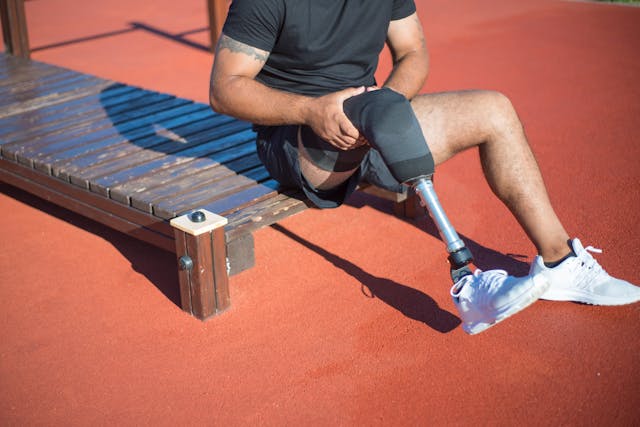
Some users experience pain or discomfort when they first start using a prosthesis. This could come from the fit, the socket, or from parts of the body that are adjusting to the new movement. It’s important not to ignore this pain. Instead, address it early and find ways to reduce it so that your progress continues smoothly.
Sometimes, a small adjustment in the socket or a change in alignment can fix the problem. Other times, your body needs time to build strength and adapt. Stretching, therapy, and rest can all play a role in managing discomfort. Always communicate openly with your prosthetist if something feels wrong — don’t push through pain.
At Robobionics, we design for comfort. Our bionic arms are made with breathable liners and skin-safe materials. We also offer flexible sockets that adjust slightly with your movement. Schedule a comfort check with our team if you’re feeling soreness or irritation — we’re here to help, every step of the way.
Dealing with Social Situations
Social settings can bring a new kind of challenge. You may feel nervous about wearing your prosthesis in public or wonder how to explain it to others. People might stare, ask questions, or make you feel different. This emotional weight can be tough — but with the right mindset, you can overcome it.
Remember, most people are just curious. They don’t mean harm. You can choose how much to share and when to set boundaries. Over time, you’ll find ways to feel proud of your journey and your device. Wearing a prosthesis is not a weakness — it’s a symbol of strength, resilience, and forward movement.
Robobionics celebrates this strength. We share user stories that inspire others and help break social stigma. If you want to share your own experience, or read others’ stories, visit our community page and see how people are turning challenges into confidence every day.
Tracking Progress and Staying Motivated
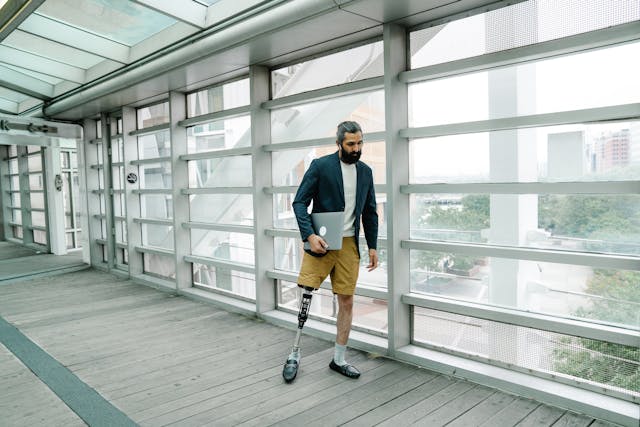
Improving your function with a prosthesis after a brachial plexus injury is a long-term journey. It doesn’t stop once you learn to use the device — in fact, that’s only the beginning. To keep growing stronger and more confident, it’s important to track your progress and stay motivated along the way. Small improvements add up over time, and recognizing them keeps you moving forward with purpose.
The key is to set realistic goals that match your current ability. These can be as simple as putting on your prosthesis every morning or completing a daily task without assistance. Keeping track of these goals helps you see how far you’ve come. Even on hard days, you can look back and see clear signs of progress. This builds both confidence and focus, especially during plateaus when progress feels slower.
At Robobionics, we provide goal-based training tools and rehab programs that are easy to follow. Our tracking system allows you to monitor your activities, identify strengths, and work on areas that need improvement. Ask us about our user progress kits, designed specifically for prosthetic users recovering from brachial plexus injuries.
Setting Meaningful Goals
When setting goals for your recovery, it’s important to make them personal and meaningful. Don’t just think in terms of what you “should” be doing — think about what truly matters to you. It could be cooking a meal, buttoning your shirt, or playing with your kids. When a goal feels personal, it gives you more reason to keep working toward it.
Start with small, manageable goals that you can achieve within a few days or weeks. As you reach them, your motivation grows, and so does your belief in your ability. Over time, you can build up to more complex goals like using your prosthesis during work tasks or outdoor activities. The idea is to always have something to aim for without feeling overwhelmed.
Robobionics supports goal-setting by working with you and your rehab team. We help map out milestones that are realistic and uplifting. Our prosthetic trainers and experts are here to guide you through each one. Reach out to create a personalized goal plan that matches your lifestyle and recovery timeline.
Using Tools to Track Improvement
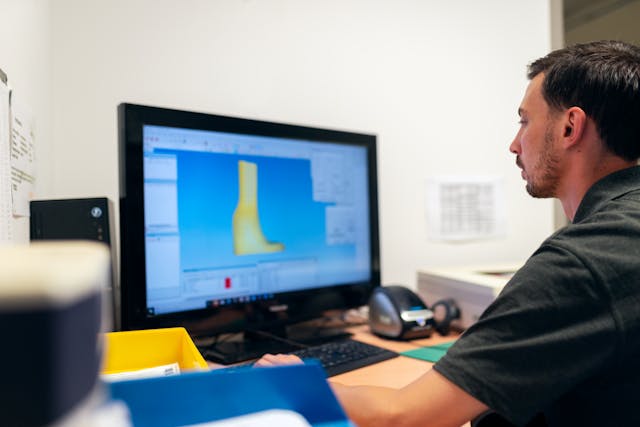
Just like athletes use tools to track performance, prosthetic users can benefit from simple tracking systems. Writing down what you did each day or keeping a checklist of tasks can show you patterns and help you spot what’s working. These tools are especially helpful when you’re learning a new skill or trying to rebuild strength.
Apps, journals, or even printed charts can help you see your progress clearly. Some users take photos or videos of themselves doing tasks over time — this visual feedback is powerful and encouraging. Even when changes feel small, these tools show the growth happening behind the scenes.
At Robobionics, our gamified rehab apps include built-in tracking tools that measure your grip use, task completion, and practice time. These features are easy to use and designed to fit into your routine. Try a demo of our home rehab app and see how tracking can make your recovery feel more rewarding.
Celebrating Small Wins
Recovery isn’t always about the big milestones — it’s also about the little victories. Every time you successfully use your prosthesis to complete a task, that’s a win. These moments may seem small at first, but they build a foundation of strength, resilience, and self-belief.
Celebrating your wins doesn’t have to be big or formal. It could be telling a friend, treating yourself to something you enjoy, or just taking a moment to feel proud. Sharing your success with others also spreads positivity and encourages people on similar journeys. These small acts help you stay emotionally connected to your progress.
At Robobionics, we love hearing about your success stories — and we often share them with our growing community to inspire others. Whether it’s your first time using a spoon or your return to work, tell us your story so we can celebrate your progress together. You’ve earned it, and your journey deserves to be seen.
Conclusion: Your Progress, Your Pace
Improving daily function with a prosthesis after a brachial plexus injury is not about rushing or aiming for perfection. It’s about steady, meaningful progress — at your own pace. Some days will be easier than others, but every effort brings you closer to freedom and confidence. Whether it’s holding a spoon, typing an email, or simply reaching out with your new hand, each task matters.
At Robobionics, we are proud to walk this path with you. Our team is here to offer support, training, and tools that make daily living smoother and more independent. We believe that with the right prosthesis, the right plan, and the right attitude, you can achieve more than you thought possible.
Book a free consultation, try a demo of Grippy™, or join our rehab support program today. Let’s take your next step together — because your recovery deserves care, strength, and smart technology that’s made just for you.



